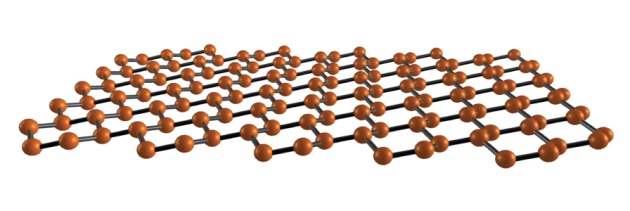While our silicon chips are generally fast enough at the moment, as we have to pack more transistors into them the manufacturing process has to get smaller and smaller. With most chips made today being fabricated at nanometre lengths between 45nm and 14nm, this process of getting transistors to work correctly at smaller scales is becoming increasing difficult. Scientists have known for a while that eventually, we will hit a wall with silicon-based chips and other nano-materials will be required for chip production.
While graphene has been put forward as a possible replacement for silicon, there is now a new nano-material available that could be even better suited to chip production called silicene. Unfortunately there was a slight problem, in that when it was introduced to air, it became highly unstable. Now researchers from the Austin Cockrell School of Engineering at the University of Texas have managed to, for the first time, create a working transistor that functioned at room temperature, in air (if only for a few minutes). Pretty impressive for a man-made material that was only a purely theoretical material a few years ago!

Deji Akinwande, an assistant professor, and his lead researcher Li Tao have made this possible, with Akinwande saying “The major breakthrough here is the efficient low-temperature manufacturing and fabrication of silicene devices for the first time.” This process however is far from simple, involving multiple steps to keep the silicene as far from air as possible, with thin layers of silver and aluminium as protection.
Further work is still needed before this makes its way into your new CPU or graphics card, but Akinwande and his team are not finished, they will continue to investigate new structures and methods for creating silicene, which may lead to low-energy, high-speed digital computer chips. This could be the first real replacement for silicone and if the manufacturing process can be simplified then it could even be simpler and easier to produce than graphene.
Discuss on our Facebook page, HERE.
KitGuru Says: This could lead to some great developments in computer chips, but unfortunately even if this does prove to be an excellent nano-material for chip fabrication it will be a while until it replaces silicon and it will be competing with graphene. Maybe in a few years your new Intel CPU with be silicene powered!
Source: Nature
 KitGuru KitGuru.net – Tech News | Hardware News | Hardware Reviews | IOS | Mobile | Gaming | Graphics Cards
KitGuru KitGuru.net – Tech News | Hardware News | Hardware Reviews | IOS | Mobile | Gaming | Graphics Cards


